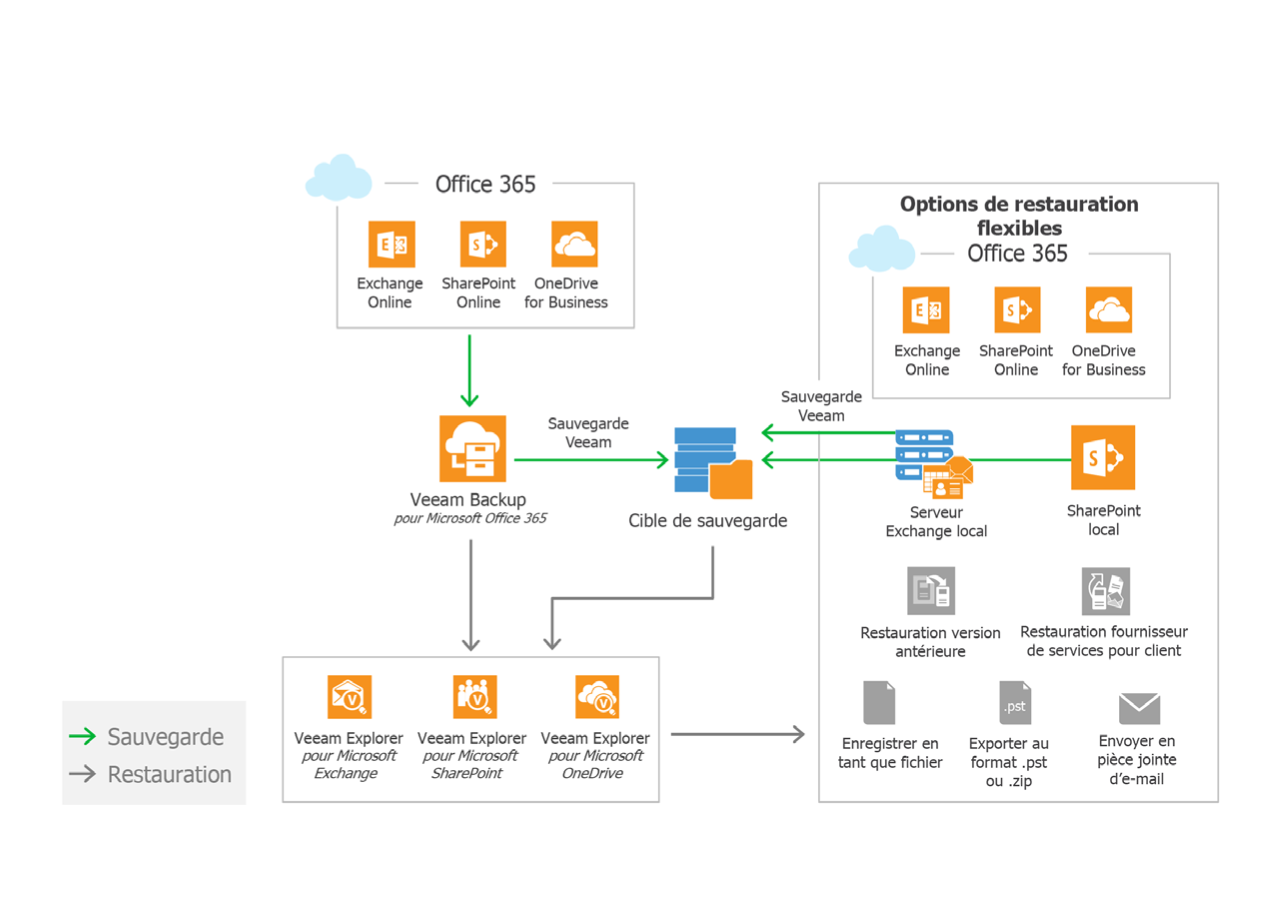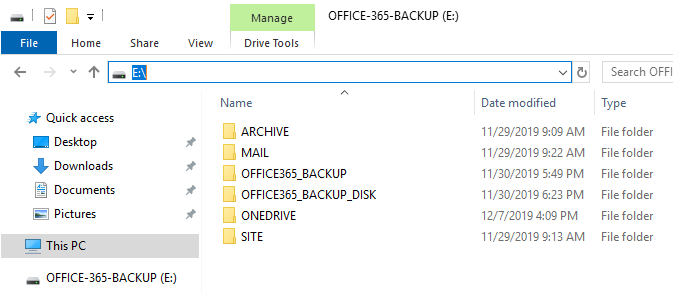
I cannot see that your link confirms your findings.

Exchange will also make sure that enough log files remain in order to restore the database. There's a threshold, I think about 100 MB, before log truncation is triggered. This is not a function built into the backup application, but a mechanism in Exchange.
Veeam backup exchange full#
After a full or incremental backup, logs will truncate on the active database and then be replicated to the passive database(s). The backup programs will check where the active databases are located and backup only them, not the passive copies. Most of the time these are evenly distributed, but one or more may failover before the backup job runs.

The usual configuration is as at your site, a mix of active and passive mailbox databases. You configure them to backup the DAG, which in smaller business consist of two servers, in larger three or four. Now Backup Exec, NetBackup and Commvault behave exactly the same way. Only used Veeam with stand-alone servers.
Veeam backup exchange windows#
Backup programs used: Windows Backup, Backup Exec, NetBackup and Commvault. I have been working with and maintaining several Exchange organizations, with DAGs since Ex 2007 (sort of). Are you sure that you have configured Veeam Backup for DAG correctly. I find this very strange what you say here. Will look in to another vendor once the veeam support maintenance end.Īny suggestion for better backup products that take backup of active database or dag level backup that we can choose which database need to take backup. This need more storage and backup window time. So Basically if we use Veeam to backup exchange 2016 physical servers we need to include both active and passive drives in the backup. With 2016, however, the Exchange writer tracks both active and passive databases so we must include all of them for truncation to occur correctly. As a result, both services are required to back up or restore Exchange databases.īasically in Exchange 2010 we can get away with backing up only active copies because the Exchange writer will still be notified as it only tracks active databases. Although the writer runs in the Microsoft Exchange Replication service, it requires the Microsoft Exchange Information Store service to be running for the writer to be advertised. This writer, named Microsoft Exchange Writer, is used by Exchange-aware VSS-based applications to back up active and passive database copies, and to restore backed up database copies.

This architecture remains the same in Exchange 2016 and Exchange 2019. Back in Exchange 2013, the VSS writer functionality previously found in the Microsoft Exchange Information Store service was moved to the Microsoft Exchange Replication service. I saw some posts regarding this and didn't get any final answer.įrom Exchange 2013/2016/2019 we have to select all disk that contains Active & Passive database drives in the backup to flush the logs properly.Įarlier versions of Exchange included two VSS writers: one inside the Microsoft Exchange Information Store service (store.exe) and one inside the Microsoft Exchange Replication service (msexchangerepl.exe). It will increase both backup window time & storage space.Īny body has this issue and how resolved this? As per Veeam DOC. We have to select both active and passive Copies. If we select just Active Copy then exchange logs don't truncate. We can select server level backup and choose the drives. It will increase both backup window & storage space. Select DAG level backup adding drives - that backup both active active and passive database. Node 2 - DB1 (Passive-F:Drive) DB2 (Active-E:Drive) Node 1 - DB1 (Active-E:Drive), DB2 (Passive-F:Drive)

We are using Veeam 9.5.4 to backup the database. Both host has active and passive database. We have DAG with 2 physical Node Cluster.


 0 kommentar(er)
0 kommentar(er)
